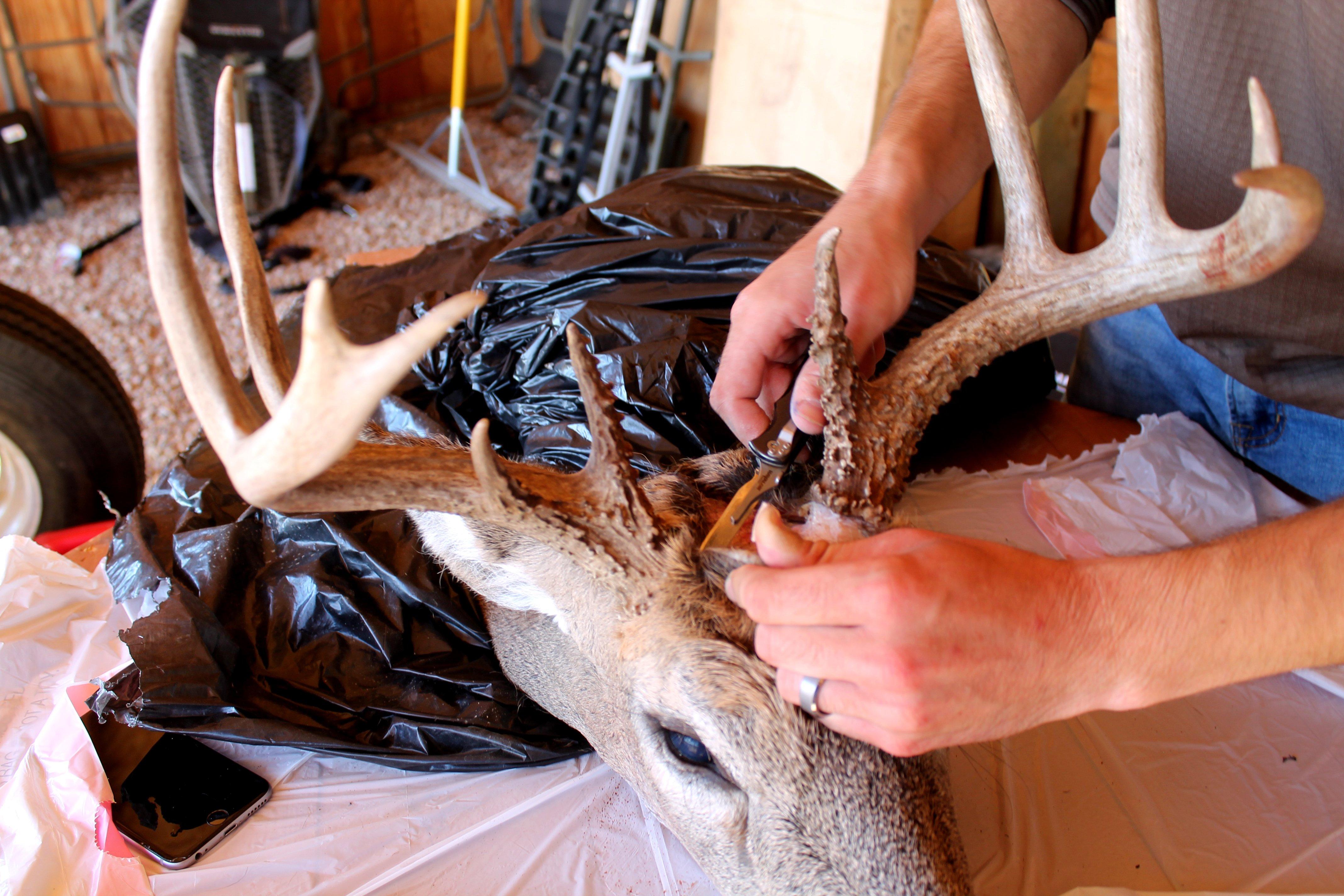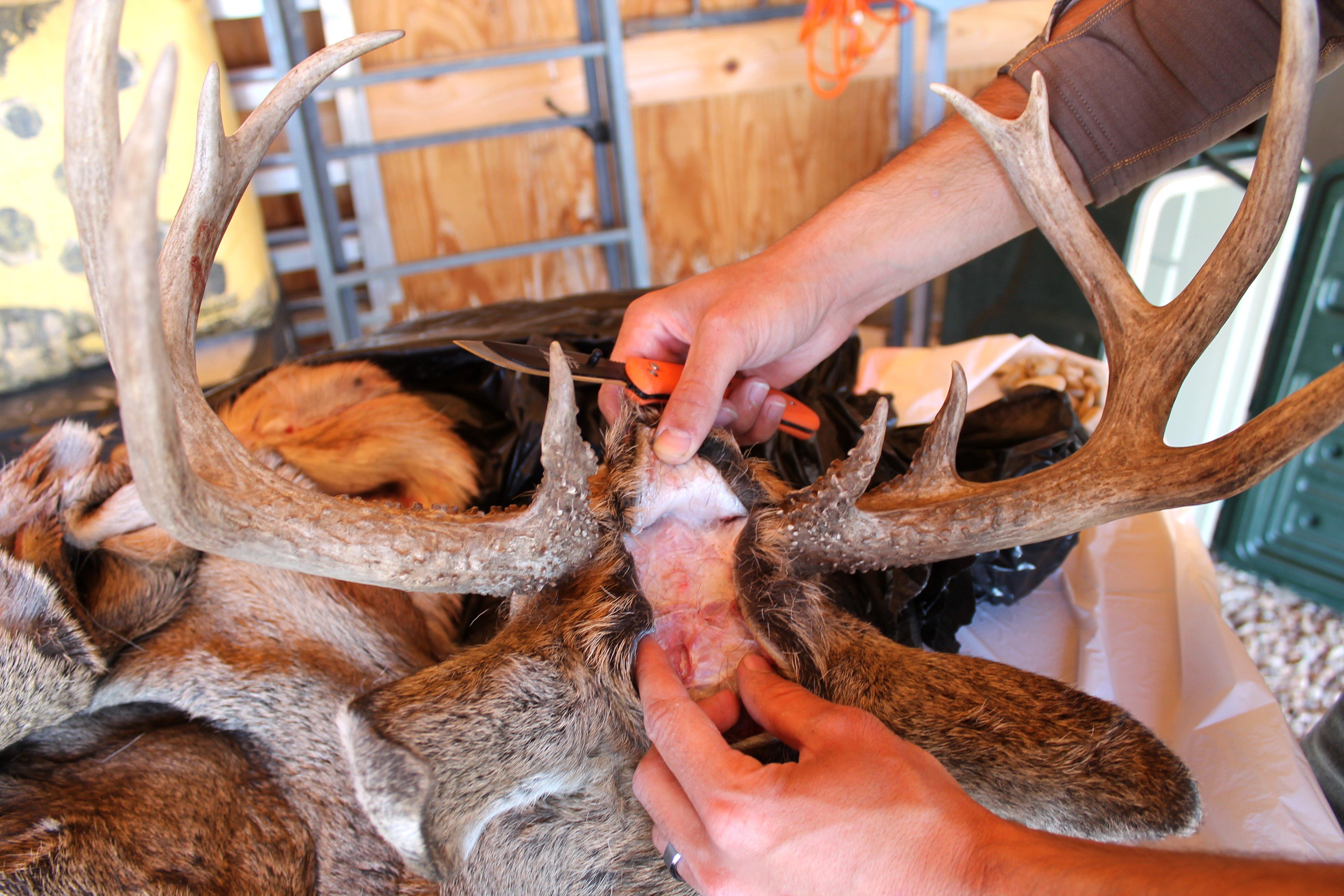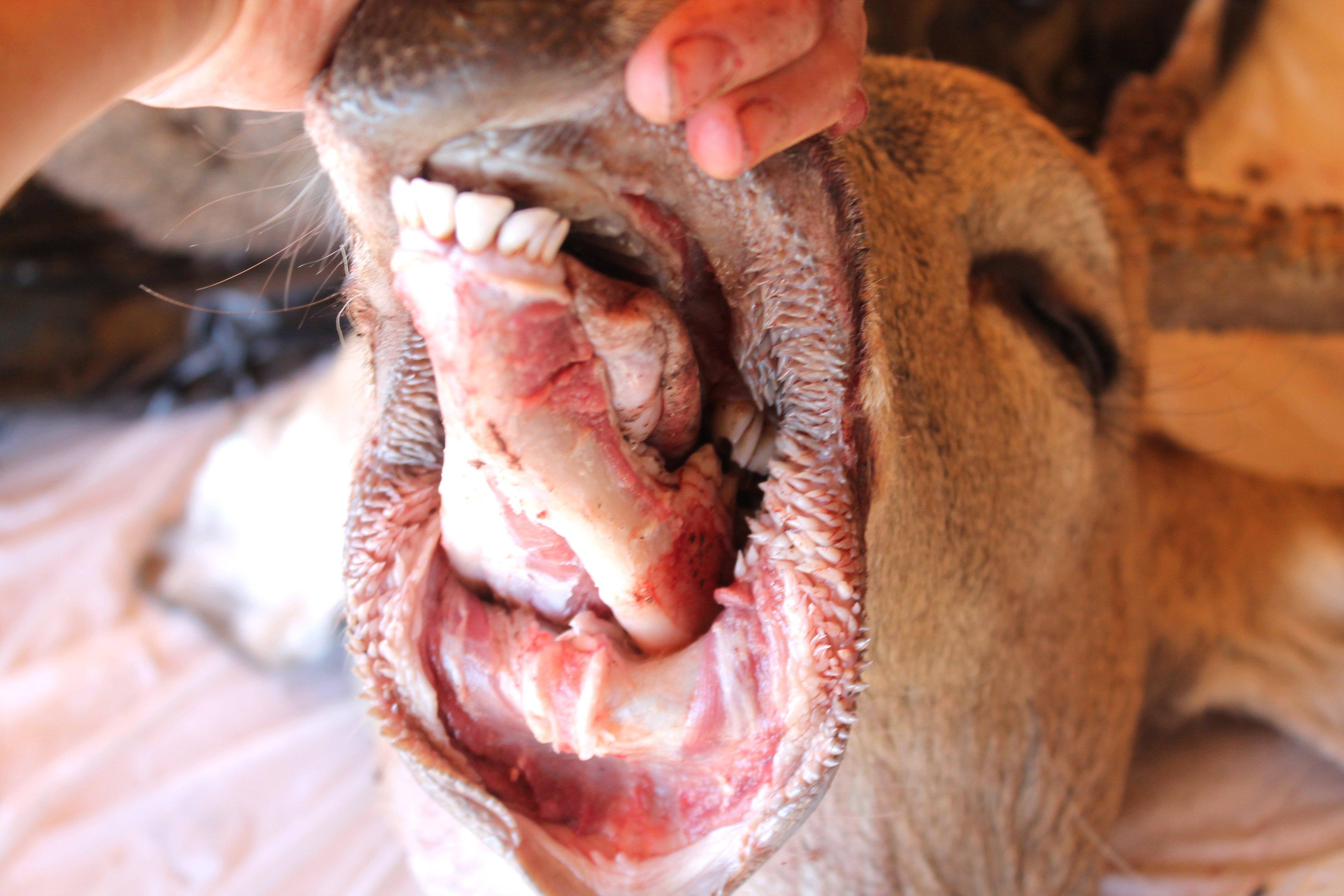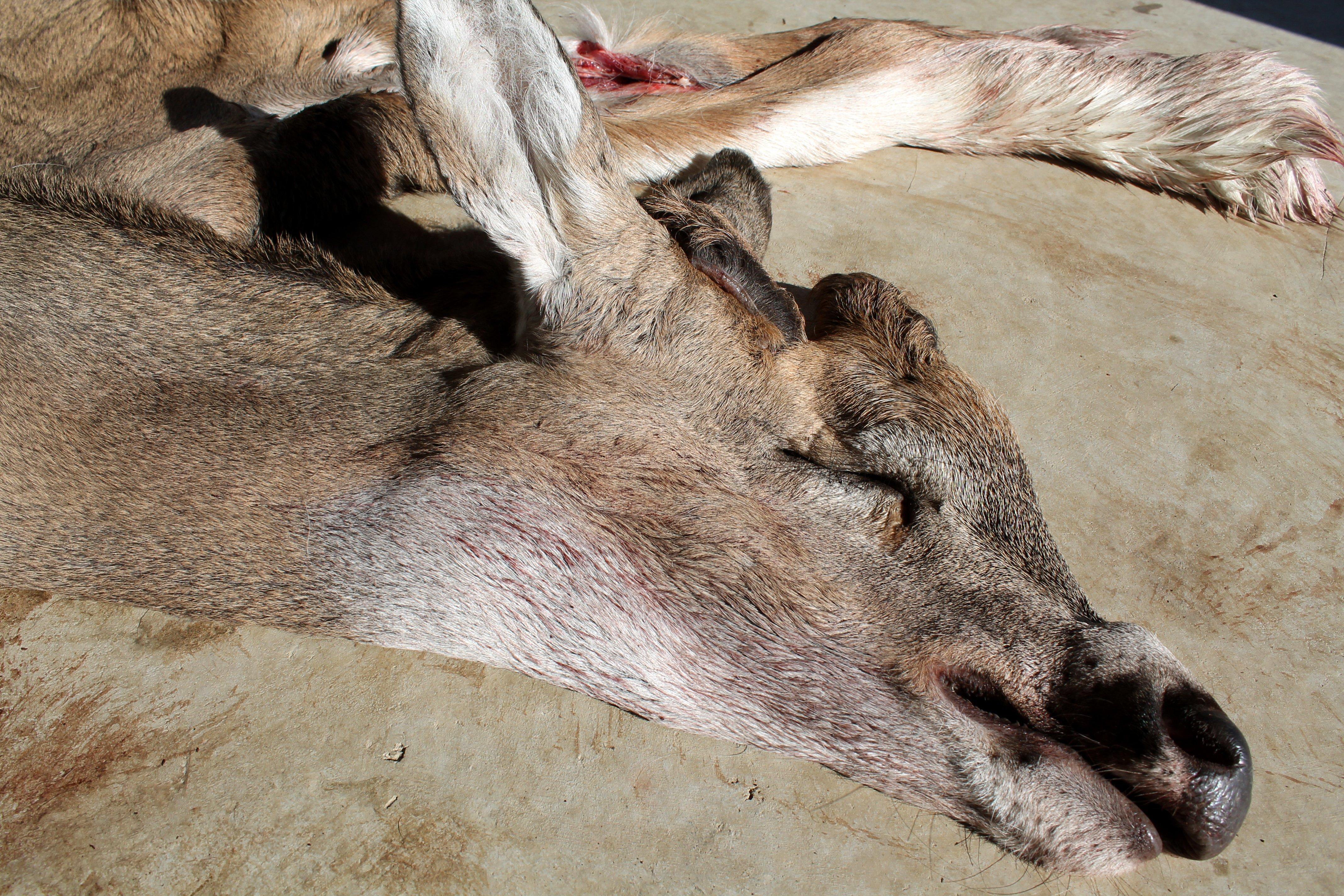Learning how to legally and efficiently transport deer from a road trip will make your journey much smoother.

Shooting an out-of-state buck is a blast, but don’t let the excitement cloud your post-hunt judgement. Image by Bill Konway
It wasn’t too many decades ago that hunters shot bucks, tossed them in the pickup, and drove back home. CWD zones didn’t matter. State lines didn’t, either. Hunters just loaded their hard-earned deer and hit the road.
Enter CWD and its unrelenting spread. This disease is wreaking havoc throughout the nation, and it continues to be discovered at random locations. Some experts attribute that to the transport of infected deer, live and harvested. Of course, state wildlife agencies and natural resources departments have passed laws to restrict and regulate the import, export, and overall transport of deer carcasses, especially high-risk parts.
Naturally, that poses many challenges for out-of-state deer hunters. Getting meat, antlers, and mounts back home are more cumbersome than ever. It takes work to get that deer across state lines.
But it’s more than possible. I’ve been fortunate to shoot deer in many places away from home. And I’ve brought bucks back from Missouri, Ohio, South Dakota, and more. Here’s a 10-step plan to prep your out-of-state buck for the ride home.
Editor’s note: Regulations and laws on transporting carcass and deer parts vary from state to state. Research and comprehend the laws at your hunt destination, home state, and everywhere between.
1. Read the Regs
The first step in getting your buck home involves reading. Study the complete hunting regulations, including all applicable laws for the hunt. Regarding transport, read the regs for the state you’ll hunt, your home state, and all states you’ll pass through. Some laws are largely constant from state to state, but others vary significantly in principle and verbiage. It’s crucial to learn the requirements for each state.
2. Tag the Buck
An obvious requisite, you have to kill that buck before you can bring it home. Deploy a sound game plan to create an opportunity. You might bring home an out-of-state buck.
When the deer is down, fill out your tag, and apply it to the deer. Every state requires a slightly different process. For example:
Kentucky requires you to fill out a harvest log before moving the deer. Further, if the deer leaves your possession, a physical carcass tag with your info and confirmation number must remain with the animal. In Ohio, after the deer is recovered, a harvest tag must be filled out and attached to the deer before it’s moved. Iowa requires a tag to be notched and placed on the buck’s antlers. Some states require physical tagging, but others don’t, and those that do have varying requirements.

The author shot this buck in South Dakota. He had to cape it off the skull and skull cap the antlers to get the buck home. Image courtesy of Josh Honeycutt
3. Think Taxidermy
It isn’t time to cape the buck, but it’s time to decide if you will. If you want a shoulder mount, you must factor that into the process. Often, hunters who shoot out-of-state bucks use a taxidermist in the state they hunted. Then, they pick up the finished mount, or it’s shipped to their home. Either way, a finished taxidermy product can be transported legally.
Hunters who decide to use their trusted home taxidermist must take extra steps to transport the antlers and hide. Folks bringing their deer home to a local taxidermist must cape the deer from the mid-point of the torso up the shoulders, neck, and head. The hide must be entirely removed from the skull. Next, the antlers must be skull-capped, and all brain matter and tissue must be removed from the top and bottom sides of the skull cap. Then, clean the skull.
Don’t Miss: DOES THE MOON ACTUALLY AFFECT DEER?
4. Field-Dress It
It’s important to field-dress the deer as soon as possible. In warmer weather, it’s even more important to remove the entrails pronto. Don’t risk meat spoilage.
If you’re getting a shoulder mount, only cut up to the mid-point of the torso. It makes the gutting process a bit more difficult, but it’s a necessary step to ensure you don’t mess up the cape. If a shoulder mount isn’t in play, move forward with a field-dressing cut up to the brisket.
Note: Most states require that proof of sex remain attached to the carcass until it’s tagged and checked in, and a confirmation number is in hand.
5. Get to the Truck
When the deer is tagged and gutted, get the carcass out of the field. On private land, trucks, tractors, and ATVs work great. On public ground, carts, sleds, and pack frames rule the day. Either way, use the appropriate method to get that buck back to the vehicle.

Caping a buck’s hide off the skull requires a series of careful, precise cuts. Image courtesy of Josh Honeycutt
6. Check It In
If you haven’t already, check in that deer. Some states still require use of physical check-in stations. (That’s especially true for CWD management and monitoring zones.) Most states allow phone or online check-ins. A few even have apps that streamline the process. Whatever is required, complete the process, and record the associated confirmation number.
Don’t Miss: 6 OF THE BEST NEW DEER LOADS FOR 2024
7. Cape It Correctly
Getting that shoulder mount? For in-state drop-offs, it likely isn’t required to cape it off the skull. Situation depending, the taxidermist might even cape the deer off the field-dressed carcass. Of course, if you must leave a CWD county, CWD zone, or especially the state to drop off a deer for taxidermy, it must be caped off the skull, and the skull cap must be removed and free of brain matter.
8. Remove and Clean the Skull Cap
If you’re hauling the buck back home, you must remove the skull cap. Even if you just want to take the antlers and don’t want a shoulder mount, skull capping is still required. You cannot take eyes, brain matter, or other unlawful deer parts out of CWD zones or across state lines.
The intent is to leave brain matter and other high-risk parts on the property, or dispose of those in the state from which they originated. That translates to a clean skull cap with no brain, blood, or other unwanted tissues.
9. Bone Out the Meat and Chill It
The head isn’t the only area with high-risk parts. Other areas pose issues. These include the spine, spleen, lymph nodes, and more. Because of that, most states require that you have packaged, boned-out meat before leaving CWD zones or crossing state lines.
After the meat is boned out, package it up. Place it in a cooler, and get it on ice. Keep the cooler closed so it maintains a proper temperature throughout the return trip.

The most tedious caping is around the eyes, nose, and mouth. Image courtesy of Josh Honeycutt
10. Dispose of High-Risk Parts Legally
Some — but not all — high-risk parts include the brain, spine, eyes, lymph nodes, other central nervous system parts, and more. Proper disposal of deer carcasses and high-risk parts varies from state to state. Some require leaving the deer parts at the property of origin. Others require hunters to bag carcasses and parts and place them in trash disposals. And others provide designated carcass drop-off sites.
Maintain Confirmation Numbers
States that provide a confirmation number for checked-in game also require hunters to maintain those numbers. Generally, even if the state in which you harvested the deer doesn’t require it, your home state will. Each wild-game trophy (and unconsumed meat) must have identification. If it’s from a state that provides a confirmation number, that’s likely the required documentation. If it’s from a state that does not, the hunting license or deer permit is usually the critical identifier for that trophy and associated meat. Associated documentation is almost always required to remain with the trophy (antlers and a mount, for example) for its lifetime.

Once caped, freeze it, or keep it on ice (but dry in a sealed bag) and package it for the ride home. The cape doesn’t look like much here, but the taxidermist will make a great finished product with it. Image courtesy of Josh Honeycutt
Bring it Home
On the surface, prepping your out-of-state buck for the ride home might seem like a headache. In some ways, it is, but it’s necessary. It’s the law. And as CWD continues to spread, it’s also the best thing we can do to prevent the deadly disease and other illnesses from spreading into new areas.
Don’t Miss: WHEN THE NEIGHBOR KILLS YOUR TARGET BUCK: STORY OF A GEORGIA DROP-TINE GIANT












